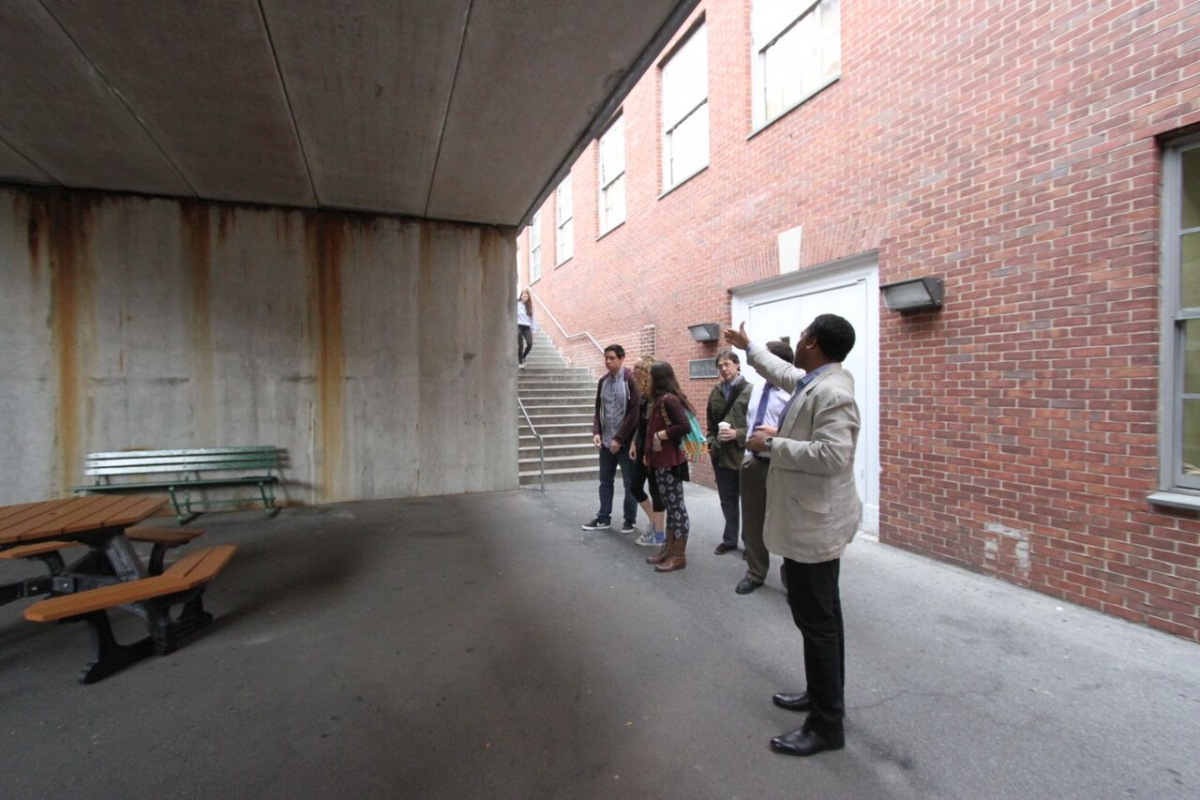Finding common ground with the people you live with is high on the mental checklist of goals most dorm residents have prior to move-in.
To make achieving that particular goal a bit easier, Manhattan College has debuted its first four Common Interest Communities (CIC): Environmental Issues and Sustainability, Nuestra Casa, Performing Arts and Visual Culture, and Entrepreneurship. Housed in designated areas of Horan and Lee Halls, these communities bring together similar lifestyles, heritages and pastimes, and have already secured a high number of inhabitants. For the 2015-2016 school year, more than 60 Jaspers—of all class years, but mostly freshmen—opted to live in a CIC, according to the department of Residence Life.
A Way to Make Friends
At a meet-and-greet social held during the first weeks of class, resident assistants (RAs) from the new communities shared their plans for the semester, and CIC members named the reasons why they joined. For Tara Connor ’19, the decision to spend her freshman year in the Performing Arts and Visual Culture community, located on the 10th floor of Lee Hall, was a way to connect with others who shared her passion for theater.
“I’m here on a performing arts scholarship, so when I saw I could opt to live in a Performing Arts and Visual Culture community, I thought ‘I might as well join,’” she said during an icebreaker exercise. “It’s easier to make friends who have similar interests as you.”
Another freshman, Rachel McDaid ’19, who is one of Connor’s roommates, was similarly thrilled to be around other culture buffs.
“I love music and being around people who appreciate it,” she said.
A Way to Branch Out
CIC residents aren’t the only ones excited about the events to come. Their RAs are, too. Carlos Perez ’16 and RJ Liberto ’16, who oversee Jaspers living in the Performing Arts and Visual Culture community, are planning group excursions to the Metropolitan Museum of Art and to midtown for a Broadway musical or two.
Along with faculty adviser and associate professor of visual and performing arts, Mark Pottinger, Ph.D., they are also looking to create a campus mural underneath Founder’s Bridge, on a wall near the ground floor of Thomas Hall.
Meanwhile, on the 10th floor of Horan Hall, the Nuestra Casa community has outfitted its hallways with brightly colored signs and messages of positive thinking scrolled in English and Spanish. One of them, “Lo que no me mata, me alimenta,” translates roughly to “What doesn’t kill me, fuels me,” explains Aleysha Taveras ’16, who, in addition to serving as RA of this community, is also vice president of the campus cultural group, Fuerza Latina.
She and her co-RA, Michelle Beltran ‘16, are planning a trip to the Bronx Museum this semester with Nuestra Casa, to follow the Hispanic heritage lunch they organized on campus in September that featured a performance by Estudiantina La Salle, a musical group from Mexico.
A Way to Raise Awareness
Leaders of the Environmental Issues and Sustainability CIC are expanding students’ worldview in a different way. The faculty adviser and assistant professor of environmental studies, Yelda Balkir, Ph.D., is set on making residents part of the global conversation about climate change through a panel discussion she’s moderating this fall.
Scheduled to take place in November, the event will hopefully include a conversation between residents of the Environmental Issues and Sustainability CIC and the organization, Bronx Climate Change. In addition to other topics, they will brainstorm ways of creating eco-friendly jobs in the Bronx.
“Just recently, Pope Francis spoke to the United Nations about climate change and environmental justice. These are real problems that affect life in the long run,” says Balkir, noting that sustainability is a very timely topic.
A Way to Learn
Perhaps the most important aspect of the College’s new CICs is each one’s ability to foster relationships between individuals on campus who might not have otherwise met.
“Learning doesn’t stop in the classroom,” Pottinger said. “It continues in the home and in your everyday experiences. The CICs help to further communication and dialogue in the dorms, and bring people together.”